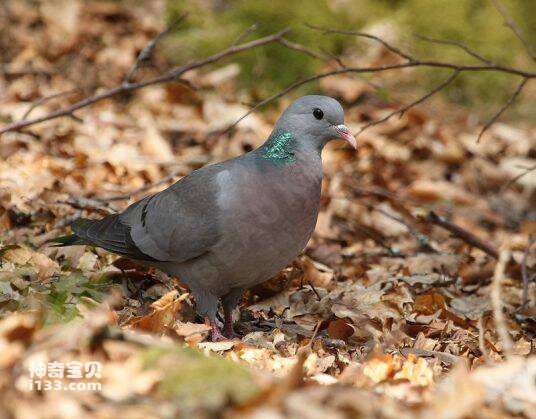Columba oenas
IUCN
LCBasic Information
Scientific classification
- name:Columba oenas
- Scientific Name:Columba oenas,Stock Dove
- Outline:Landfowl
- Family:P.Order P.family P.genus
Vital signs
- length:28-32.5CM
- Weight:About 300g
- lifetime:No textual research information is available
Feature
The plumage is dark gray, with two indistinct black stripes on the wings
Distribution and Habitat
Place of origin: Albania, Algeria, Andorra, Armenia, Austria, Azerbaijan, Belarus, Belgium, Bosnia and Herzegovina, Bulgaria, China, Croatia, Cyprus, Czech Republic, Denmark, Egypt, Estonia, Finland, France, Georgia, Germany, Greece, Hungary, Iran (Islamic Republic of), Iraq, Love Ireland, Israel, Italy, Jordan, Kazakhstan, Latvia, Liechtenstein, Lithuania, Luxembourg, Republic of Macedonia, Malta, Moldova, Montenegro, Morocco, Netherlands, Norway, Palestine, Poland, Portugal, Romania, Russian Federation, Serbia, Slovakia, Slovenia, Spain, Sweden, Switzerland, Arabia Syrian Republic, Tajikistan, Turkey, Turkmenistan, Ukraine, United Kingdom, Uzbekistan.
Wandering: Afghanistan, Faroe Islands, Gibraltar, Japan, Kuwait, Kyrgyzstan, Lebanon, Libya, Oman, Saudi Arabia, Tunisia, United Arab Emirates.
European pigeons live in mountain forests, particularly deciduous broadleaf forests and mixed forests with large trees. Often live and roost in groups. Non-breeding season often to the ope
Appearance
European pigeon neck blue grey with grape or lavender envelope. Cheek, ear cover, eye first, chin and throat dove gray. The back and back of the neck are bluish-grey, with a green and slightly mauve red sheen, especially on both sides of the neck. The back and shoulders are bluish-gray, the underback and the inner cover and fly feathers of the two wings are dark gray stained with brown; The upper wing is covered with gray feathers with two incomplete black spots. The flight feathers, primary coverts and winglets are light brown. Waist and tail cover light gray. The tail rhyme is dark gray, with broad black end spots. The breast is pigeon grey with hints of lavender or grape pink. Gray underbelly and tail coverts. Undertail coverts are grayer. Axillary and underwing coverts white. Flange grey.
The neck is blue-gray, the upper body is mainly dark gray, the waist and tail cover feathers are light gray, the side and back of the neck have green metallic luster, the tail feathers have bro
Details
Columba oenas (Stock Dove) has two subspecies.

European pigeons are resident birds. It's usually an open area to live in. Even tree nesting does not favor heavily wooded areas, and shores with holes in the cliffs are common. Flying fast, two wings inciting fast, often can hear the vibration of the wings. During the spring hover flight, the wings split like whips. It feeds mainly on plant buds, shoots, young leaves, fruits and seeds. In some areas, they feed mainly on acorns and pine seeds, but also on a variety of foods: ground-hunting berries such as hawthorns and figs, grains, beans, peas, and small invertebrates. They also eat small invertebrates and grains. It often forages in the canopy and on the ground. During the autumn migration in October, European pigeons stop in acorn-rich areas to supplement their diet.
The breeding season of European pigeons is from April to July. They often nest in pairs. They usually nest at the edge of a virgin forest with old dead oaks. Nest in a hollow tree or in a shed. Sometimes they nest in abandoned houses or in stone crevices. The nest is very simple. There are a few dead leaves and twigs inside. Two eggs are laid in each clutch, and the eggs are white in color. The size of the eggs is 34-40 mm x 26-29 mm. The male and female incubate the eggs in turn. Incubation period is 16 days.
Listed on the International Union for Conservation of Nature (IUCN) 2016 Red List of Threatened Species ver3.1 - Not Threatened (LC).
Protect wild animals and eliminate wild meat.
Maintaining ecological balance is everyone's responsibility!








